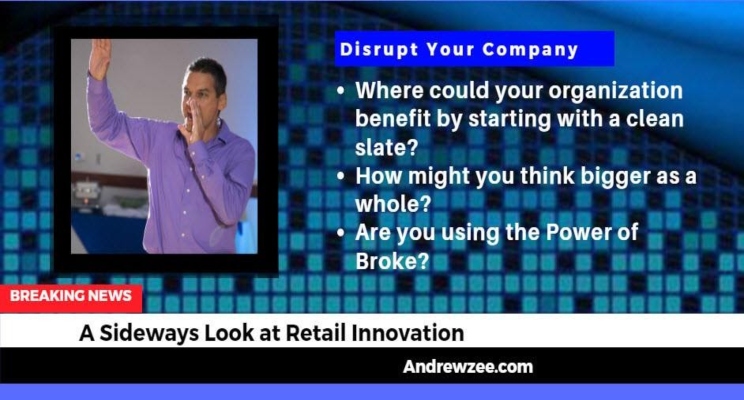Retail Innovation is achieved by asking the hard questions
Companies that are able to sustain 10X growth are constantly asking hard questions about their existing processes, which results in the discovery of better opportunities and innovations. Finding efficiencies and increasing the focus on what is working, while doing less of what is not working is the foundation of innovative teams that strive towards implementing learning initiatives at all company levels.
Toyota relentlessly measures process time, end-to-end in all of their factories, and is able to optimally eliminate waste and improve efficiency. Gap, Capitol One, Wells Fargo, Macy’s, Sephora and PG&E all have innovation teams that test products and services in order to select the best option before large scale implementation. These teams operate as separate special forces entities, applying lean principles at every corner, optimizing their process and their products. Projects and methodologies that gain traction are then implemented throughout the rest of the organization. As these companies show us, in order to see different results you have to do things differently.
Questions to ask yourself:
- Are you using candor and debate to get ideas from every angle like Walt Disney and Pixar? These companies have implemented systems, such as Pixar’s Braintrust, in which a team meets and discusses future plans and problems with candor. Candor is necessary, as people may not introduce their ideas if they think they will not matter. How can you use the Braintrust of a thousand Minds to propel the company’s future by listening to their suggestions?
- Are you turning over every stone to see where you can achieve performance gains while eliminating waste? What if you asked every individual how they could turn a negative into a positive, via a survey? Getting input from all available sources can increase the chance of finding a brilliant idea centered around new solutions, similar to crowdsourcing. Have you considered using star model management, which provides a structured plan that initiates company growth in all directions vs top down.
- Is everyone searching for cheaper ways of doing things, both inside and outside of the company? Are you striving for 40% gains vs. 5%?
- Has the Pareto principle been applied throughout your organization? Do you understand which 20% of your actions are causing 80% of impact?
- What if your company only had 3 months of cash left, what would you do differently?
- Are you using the agile retail model by making smaller inventory targets that are purely data driven? What would it take to be able to produce units in-house for 1 or 2 innovation stores in really small batch sizes? How can you apply lean agile principles so that you can perform A/B testing and validate the market before going deep with full-scale overseas production? For example, Zara.com can design, produce, and deliver a new garment and put it on display in its stores worldwide in a mere 15 days. With fast fashion, Zara’s typical markdowns are around 15% vs. 50-70% with many retailers. Link to Zara article. Link to a Disrupting Fast fashion article.
- How can you make processes more like McDonald’s dead simple process and make more with less? The Power of Broke by Daymond John describes how the amount of money a company invests does not necessarily determine its success. How can you use these principles in your own business?
- For a given process, how could you benefit from switching up the order of events?
- What steps could be removed?
- What steps could be replaced?
- What separate processes could be combined?
- What if we started the process in reverse?
- Could you start a test in parallel?
- Of your current business channels, which can you double down on? How can you better focus your energy and time to produce the best results?
Exponential Change Thoughts
- How are you disrupting your industry? Does your company have a super bright internal B team that can challenge the A team? Jeff Bezos and Amazon’s success are the result of running experiments every month, week and day. These experiments allow them to better understand their market and business. You cannot disrupt your industry by just looking inward.
- How might you think bigger as a whole and work on audacious goals to obtain exponential growth? Think different, like Apple! Make your company and brand unique, and set goals that push you to the finish line.
- What are you doing to beat last year’s numbers? Every year should see growth, so set goals and makes plans that improve on the previous year’s business.
- Where are you doing well and where are your weaknesses? Analyze the trends in your company. Make sure to actively look for weaknesses that you can improve and understand the strengths that you can highlight.
- Is everyone in the organization marching to the same message? Is everyone energized with enthusiasm of change? By ensuring that your team is all on the same page and excited about their common goal, you will see the whole company improve and hit its goals.
- Where could your organization benefit by starting with a clean slate? How could things be different if you focused on how to accomplish a task vs. why you cannot finish it? By changing your perspective, you can find new solutions and have a clearer understanding of how to change the company plan.
For more on retail innovation read my article on Zara
Your Partner in Personal Growth – Andrew Zee
